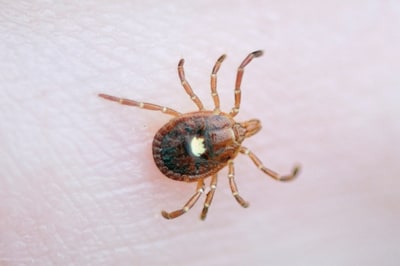2017: AMD Shows Ticks Likely Spread Bourbon Virus

In 2013, scientists collected over 39,000 ticks at 6 sites in 3 counties of northwestern Missouri as part of an ongoing Heartland virus surveillance program. With the help of AMD, scientists developed methods to test these ticks for Bourbon virus.
In 2014, when the keen eyes of a CDC microbiologist noticed something unusual in the sample from a sick person in Kansas, she suspected it might be evidence of a new virus. With her unique knowledge of viruses, and the help of advanced molecular detection (AMD) technology, she and her colleagues discovered Bourbon virus, named for the county in Kansas where the sick person lived. Considering the characteristics of the virus and the person’s report of a tick bite within days of becoming ill, CDC scientists suspected Bourbon virus might be spread to people by ticks. However, Bourbon virus was so new to scientists, they did not yet have an easy way to test ticks or people for it.
Now, by using AMD technologies and new methods designed from the resulting data, scientists can show that Bourbon virus is likely spread to people by the bite of an infected lone star tick.
In a recently published study reported in Emerging Infectious Diseases, scientists used AMD data and other laboratory techniques to develop tests to identify Bourbon virus in ticks. Using genetic sequencing and other methods, scientists tested over 39,000 ticks collected in 2013 from a nearby region in northwestern Missouri. Although this is the first study to show that Bourbon virus is likely spread to people by the bite of an infected lone star tick, scientists do not know yet how likely it is that people could get Bourbon virus infection from a tick bite.
Download a printable PDF fact sheet of this story Cdc-pdf